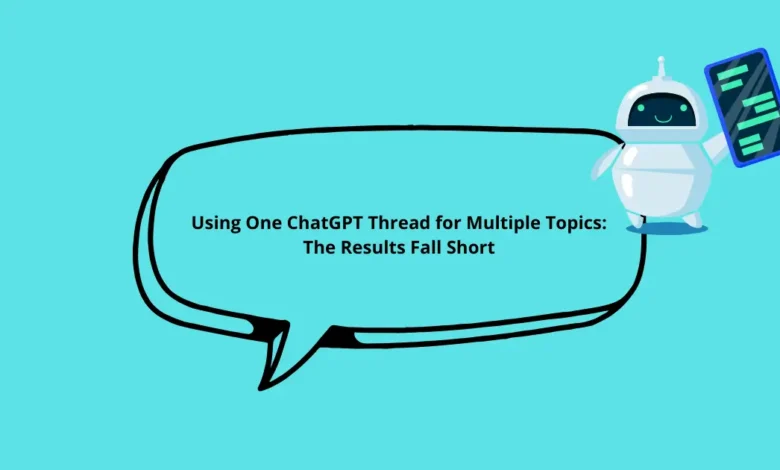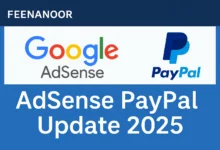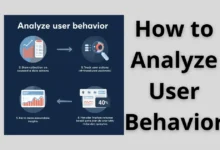Using One ChatGPT Thread for Multiple Topics: The Results Fall Short

Using One ChatGPT Thread for Multiple Topics—why do the results fall short, and how can separating conversations improve clarity and accuracy?
A fresh ChatGPT conversation feels like a blank canvas — a space where ideas can breathe, grow, and unfold without interruptions. But the moment you begin pouring multiple, unrelated topics into that same space, the clarity dissolves. The flow breaks. The results become shallow, repetitive, or oddly disconnected.
This is not a failure of the AI.
It is a natural consequence of mixing different goals, tones, instructions, and emotional contexts in a place that was meant to hold just one.
In this article, we explore why using a single ChatGPT thread for multiple topics consistently leads to weaker results, and how separating conversations can transform the quality of your thinking, creativity, and productivity.
table of contents
Why a Single Thread Fails: The Invisible Weight of Conflicting Contexts
Every conversation you have with ChatGPT builds a hidden rhythm — a tone, a direction, a memory of what you want and how you want it.
But when you bring unrelated topics into that same thread, you unintentionally layer:
- new instructions on top of old ones
- new tones on top of previous tones
- new writing styles on top of conflicting requests
- new goals while older goals are still “active” in memory
The AI tries to follow all of this at once, and the result is predictable:
answers become less sharp, less focused, and less aligned with your intentions.
The thread becomes a crowded room, and clarity has nowhere to sit.
Human Attention Isn’t Built for Multitopic Conversations
The problem isn’t only technical — it’s psychological.
Your own attention struggles when you jump between different mental tasks inside the same chat:
- Strategy
- Writing
- Analysis
- Technical fixes
- Creative ideas
- Random questions
Each shift forces your brain to:
- refocus,
- reload context,
- and mentally “remember” where you left off.
This constant switching drains mental energy.
By the time you return to the main topic, the creative depth is already gone.
A new thread is not a reset for the AI —
it is a reset for you.
Read Also :
How AI Tools Are Transforming Online Businesses in 2025
Context Overload: When the Assistant Remembers Too Much
ChatGPT is built to remember context — but too much context becomes noise.
When one thread contains:
- creative storytelling
- SEO rules
- technical instructions
- emotional writing
- different styles and tones
- long-term plans
- abrupt new requests
…the assistant carries all of this into every new answer.
This leads to:
- mixed tones
- inconsistent writing styles
- “echoes” of old instructions
- partial misunderstandings
- shorter or weaker outputs
The problem isn’t intelligence.
The problem is polluted memory.
Every Topic Is Its Own World — And Worlds Need Space
Think of each project you work on as a separate universe:
- Your writing projects
- Your SEO strategies
- Your technical configurations
- Your personal reflections
- Your creative experiments
Each universe has its own rules, goals, and emotional energy.
Combining them in one thread forces them to collide.
When you give each topic its own space, something beautiful happens:
- your instructions stay pure
- your tone stays consistent
- your goals stay clear
- the assistant adapts perfectly to that specific topic
You stop fighting context,
and you start building momentum.
Tips & Best Practices: How to Use ChatGPT for Maximum Clarity and Quality
To get the strongest, most consistent results from ChatGPT, follow these simple but powerful guidelines:
1. Use one thread per topic. Always.
If you change the goal, open a new conversation.
This single habit transforms quality dramatically.
2. Separate writing, strategy, and technical tasks.
These require very different tones and memory contexts.
3. Restart the thread when:
- you feel outputs getting weaker,
- the style becomes inconsistent,
- the assistant starts mixing old instructions into new tasks.
4. Keep long-term projects in dedicated threads.
For example:
- one thread for SEO structure
- one for English articles
- one for technical website fixes
- one for brand voice development
5. Avoid giving contradictory instructions in one place.
Don’t ask for poetic writing and strict technical analysis inside the same thread.
6. Let each conversation “breathe.”
Threads are like notebooks — use a new one when the old one fills with noise.
These small guidelines create big results.
Creativity Needs Silence — Not Crowded Conversations
Some of your best work — deep articles, emotional storytelling, elegant strategy — requires a clean mental space.
When a thread gets cluttered, the creative depth disappears.
The writing becomes thinner, more generic, less emotional.
The flow breaks.
You sense that the piece had potential, but the conversation couldn’t fully unlock it.
A dedicated thread is like a quiet room:
a place where creativity can grow without fighting distractions.
Why the Results Fall Short — The Core Truth
The ultimate reason is simple:
A single thread cannot carry multiple voices, goals, tones, and instructions without losing quality.
ChatGPT thrives when the environment is clear.
You thrive when the environment is focused.
When both clarity and focus are broken, the results fall short.
Conclusion: Excellence Begins With Focus
Using one ChatGPT thread for multiple topics feels convenient —
but convenience often sacrifices quality.
Separate threads provide:
- sharper thinking
- cleaner writing
- deeper creativity
- stronger analysis
- more consistent results
When you respect the focus of each topic, ChatGPT can give you its best work — and you can give your best attention.
In the end, a fresh thread isn’t just a new conversation…
it’s a commitment to clarity, intention, and mastery.
FAQ
Why does one thread reduce output quality?
Because mixed topics create conflicting context, forcing the AI to combine incompatible styles and instructions.
Should I open a new thread for every small question?
Not for small variations — only when the goal, tone, or type of task changes significantly.
Does separating threads help creativity?
Yes. Creative writing requires a clean environment, and cluttered context restricts emotional depth and narrative flow.
Does starting a new thread reset the AI’s memory?
Yes — and that reset improves clarity, accuracy, and coherence.
Is it harder to manage multiple threads?
Not at all.
It’s easier — because each thread becomes a clean, organized workspace.
اكتشاف المزيد من Feenanoor
اشترك للحصول على أحدث التدوينات المرسلة إلى بريدك الإلكتروني.









